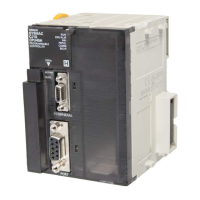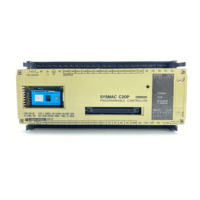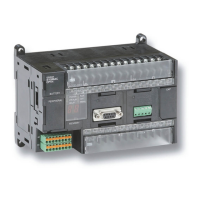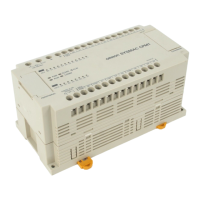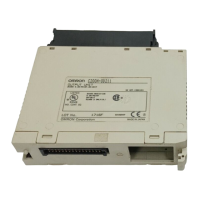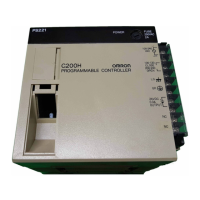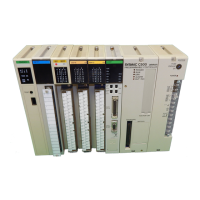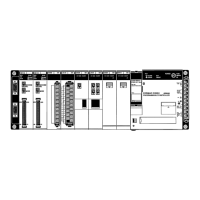38
Basic Concepts Section 2-1
2-1-10 Refresh Timing
The following methods are used to refresh external I/O.
•Cyclic refresh
• Immediate refresh (! specified instruction, IORF instruction)
Refer to the section on CPU Unit operation in the CS/CJ Series Operation
Manual for details on the I/O refresh.
Cyclic Refresh
Every program allocated to a ready cyclic task or a task where interrupt condi-
tion has been met will execute starting from the beginning program address
and will run until the END(001) instruction. After all ready cyclic tasks or tasks
where interrupt condition have been met have executed, cyclic refresh will
refresh all I/O points at the same time.
Note Programs can be executed in multiple tasks. I/O will be refreshed after the
final END(001) instruction in the program allocated to the highest number
(among all ready cyclic tasks) and will not be refreshed after the END(001)
instruction in programs allocated to other cyclic tasks.
Execute an IORF instruction for all required words prior to the END(001)
instruction if I/O refreshing is required in other tasks.
Immediate Refresh
Instructions with Refresh
Variation (!)
I/O will be refreshed as shown below when an instruction is executing if an
real I/O bit is specified as an operand.
CIO 0001
15 0
CIO 0002
15 0
CIO 0003
15 0
CIO 0004
15 0
Top
I/O refresh
Top
Cyclic refresh
(batch processing)
All real data
16-bit units
16-bit units
! LD 000101
! OUT 000209
END
! MOV 0003
END
Units Refreshed data
C200H Basic I/O Units (CS Series only) I/O will be refreshed for the 16 bits con-
taining the bit.
CJ Basic I/O Units
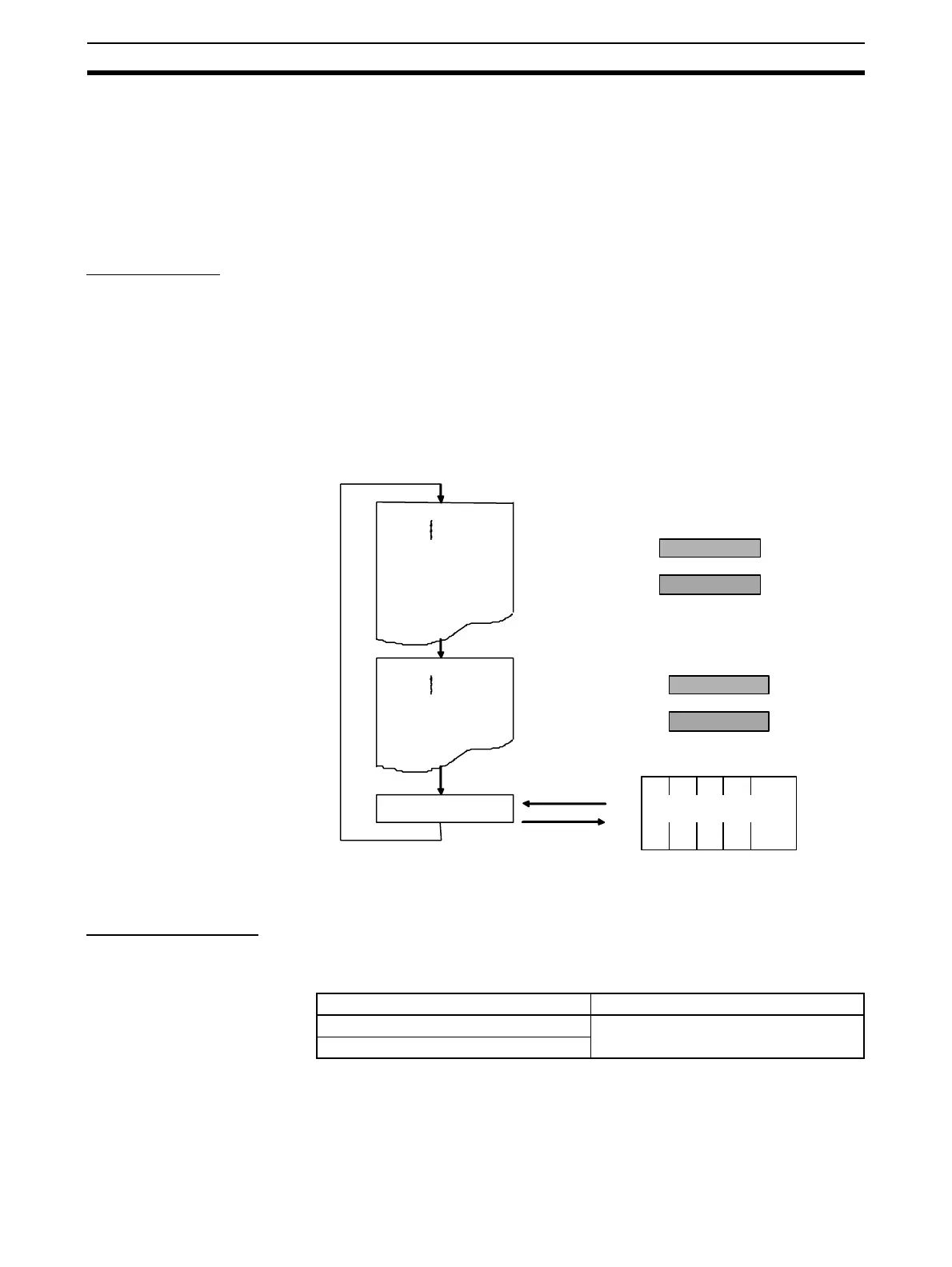